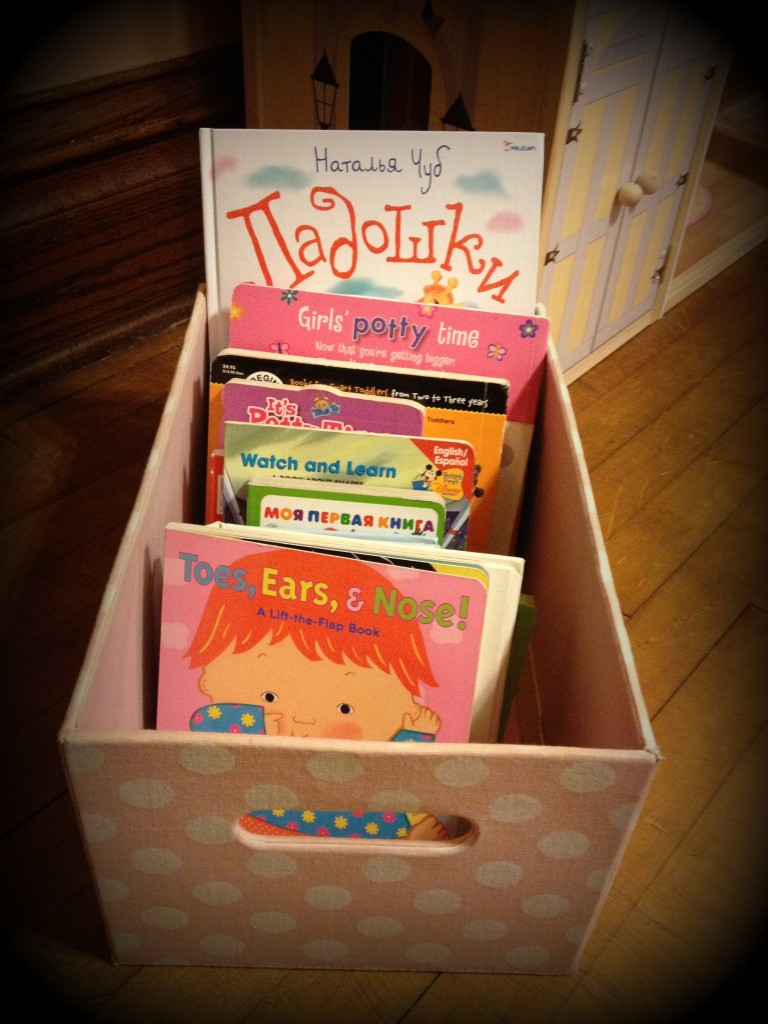
We have both Russian and English books to choose from for our toddler.
Reading together is an important part of language development for any child.
It is true whether he or she is being raised bilingual or not.
Before a child can read on his or her own, reading with a parent is the first exposure to written words.
When your child is an infant, as we’ve discussed before, that connection isn’t really there. They look at pictures and hear words, but they don’t have the association between writing and sound.
Around the child’s second year, usually some time between 12 months and 24 months, that starts to change.
As they enter toddler age children begin to recognize letters and symbols, and eventually words.
Some of the things you did when you read to your pre-verbal infant are still important at this age. Spend time on the cover and the images, especially using words to describe the images there.
Be emotional about the book and about the experience of reading it — you want the child to have excited, positive feelings associated with reading and using language.
But now you also need to start spending time on the printed words as well as the images.
Here is where it becomes very important to try and find as many books written in the child’s heritage or minority language as possible.
They need to start seeing the shape of words written in that language — especially if it has a different alphabet from the majority language, but even if they share an alphabet.It won’t always be easy.
This is also the age at which children develop “favorites” and cling to them. There may be a specific book that your child wants to hear over and over again, and you don’t have any control over what language that book is in. If she brings you a book to read that’s not in the heritage language, you can still do what I’ve done with many infant’s books: turn the pages and point at the pictures, but explain the story in your language rather than reading the text from the book.
But as they get older and written words start to become more important, you may also need to start writing out or drawing the words you’re using in the minority language. Owning books rather than borrowing them is a big help here — many of our picture books have Cyrillic hand-written in next to the English text so that my children can see the words as well as hear them.
As they get older and start using more words and more complicated ideas, you should begin to explain to your child when a book is in one language but being read in another. That way they know that the words are being translated — that they’re seeing them in one language, but hearing them in another.
I also add lots of questions about what we’re reading in Russian as we go when I read an English-language book. That way it’s more of a dialogue, and they don’t feel like I’m reading the words off the page to them directly, so there’s less confusion about which words represent which language.
There is going to come a time when the books are too complex to translate on the fly. At that point you just have to make as much of an effort as you can to find books in the minority or heritage language you’re trying to teach your child (the post on Where To Get Books In Your Heritage Language is coming soon).
But for right now, when your child is still a toddler, enjoy funny, simple and full of pictures books, that you can translate on the go.
